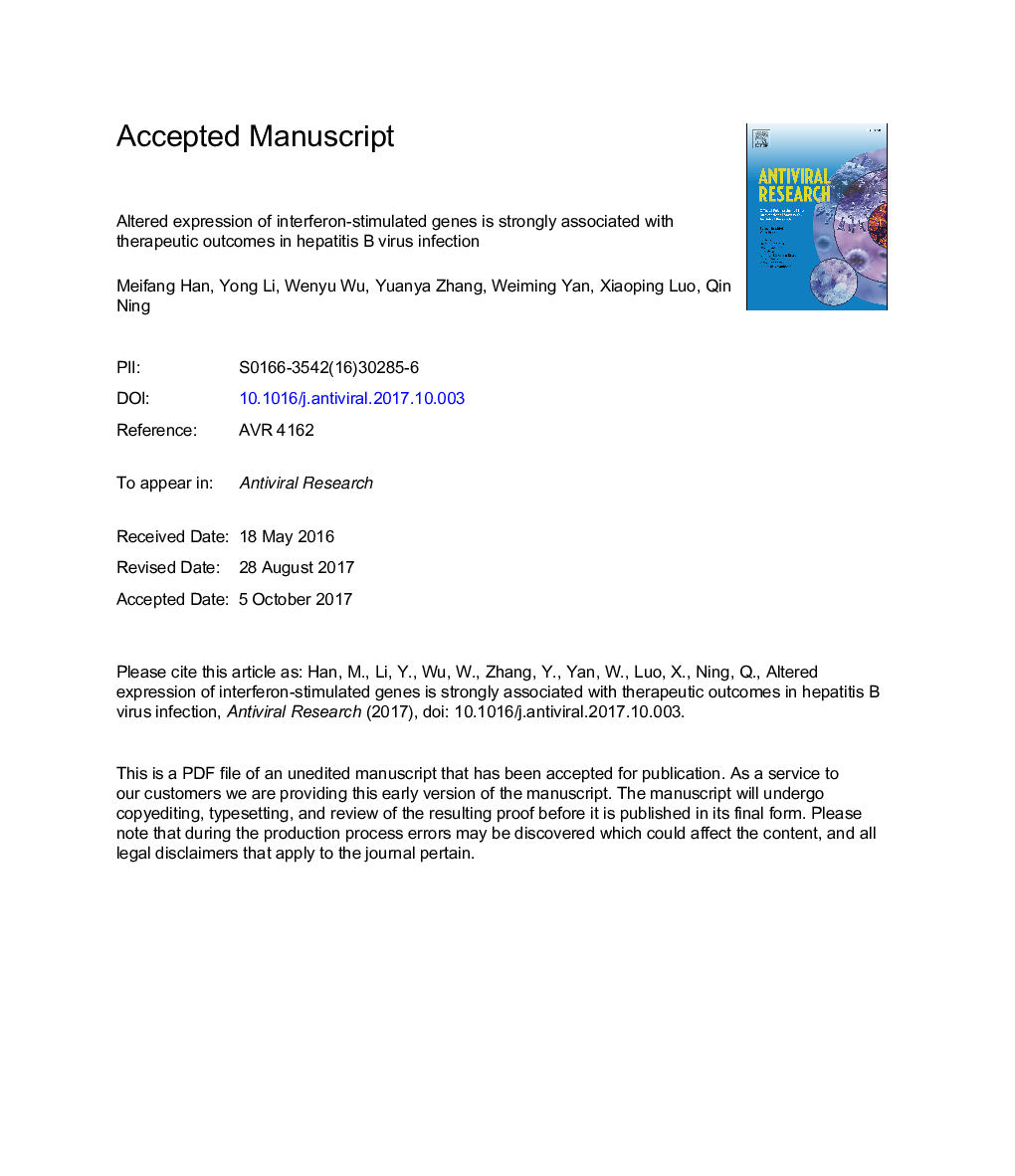| Article ID | Journal | Published Year | Pages | File Type |
|---|---|---|---|---|
| 8523482 | Antiviral Research | 2017 | 39 Pages |
Abstract
Our previous OSST study shows that switching to pegylated interferon (Peg-IFN)-α2a results in higher rates of response hepatitis B e antigen (HBeAg) seroconversion and hepatitis B surface antigen (HBsAg) loss at the end of treatment, compared with nucleot(s)ide analogues (NAs) monotherapy in long term NA-treated chronic hepatitis B (CHB) patients. In order to characterize the correlation between Peg-IFN-α antiviral effect and IFN-inducing signaling in CHB patients who switched to Peg-IFN from long time entecavir (ETV) treatment, we investigated the dynamic expression of interferon-stimulated genes (ISGs), including STAT1, MX, and a negative regulatory factor, suppressor of cytokine signaling 3(SOCS3), which negatively regulate IFN JAK-STAT signaling pathway by interacting with STAT1 and STAT2, in peripheral blood and paired liver samples, obtained from 54 CHB patients enrolled in a clinical trial, OSST study. In Peg-IFN group, responders showed a more significant decline in HBsAg, compared with non-responders. Following the treatment, peripheral blood and hepatic STAT1 and MX expression levels were higher in Peg-IFN responders, while SOCS3 expression was higher in non-responders. Fold induction of STAT1 at week 4 and MX at week 12 in PBMCs directly correlated with HBsAg decline at week 48 relative to the baseline. Responders showed a significantly increased activation and nuclear localization of phospho-STAT1 following Peg-IFN treatment, compared with non-responders in liver. Whereas, non-responders exhibited significantly higher hepatic expression of SOCS3 before the treatment compared with the responders and even higher expression levels after the treatment compared with the baseline, which may be involved in the mechanism of IFN resistance.
Keywords
HBsAbCHBcccDNAmyxovirus resistance protein ASOCS3PKRPEG-IFNhepatitis B e antibodyHBsAgRNA-activated protein kinaseHBeAgPBMCsISGF3ETVHBeAbNASIRF9GAPDHInterferon regulatory factor 9Janus kinase2′,5′-oligoadenylate synthetasecovalently closed circular DNAHCCISGsStat1STATHepatitis B surface antigenEntecavirPegylated interferonAntiviral therapysuppressor of cytokine signaling 3hepatitis B surface antibodyperipheral blood mononuclear cellsinterferon-stimulated gene factor 3signal transducers and activators of transcriptionHepatitis B e antigenchronic hepatitis BHBVhepatitis B virusJAKInterferon-stimulated genesHepatocellular carcinoma
Related Topics
Life Sciences
Immunology and Microbiology
Virology
Authors
Meifang Han, Yong Li, Wenyu Wu, Yuanya Zhang, Weiming Yan, Xiaoping Luo, Qin Ning,
